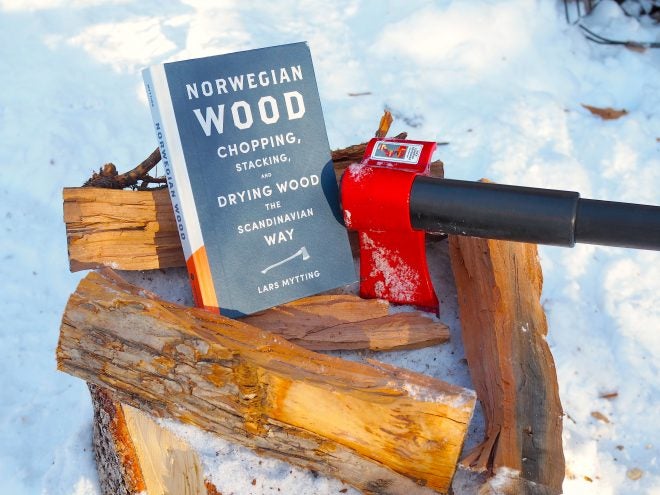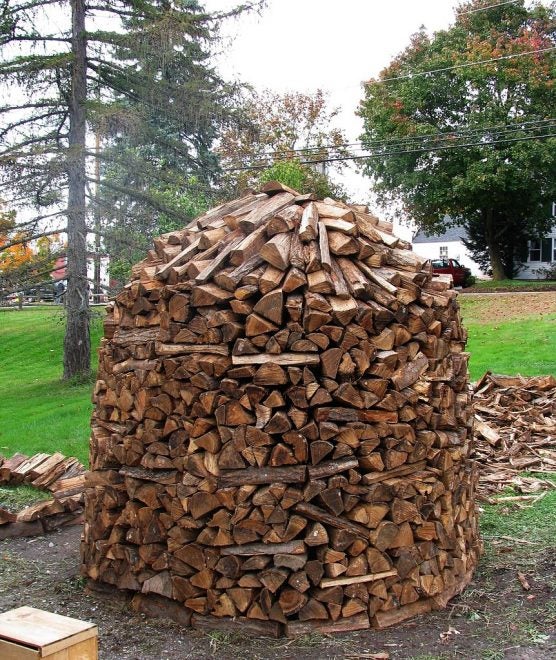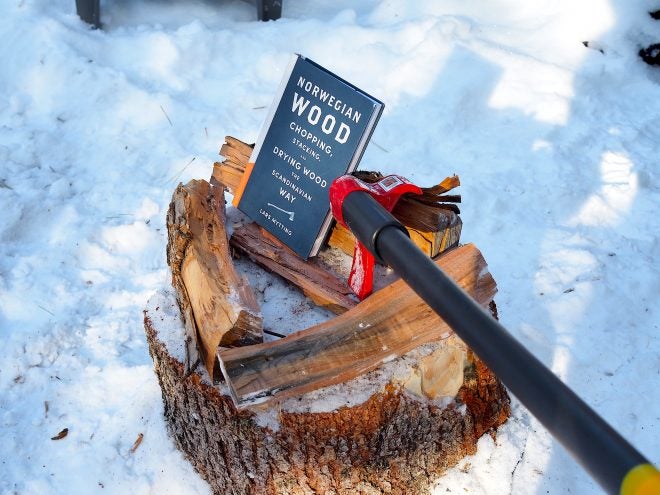Home On The Range #012: Norwegian Wood – The Scandinavian Way
RusDs 01.01.21

Welcome back to our recurring series of “Home on the Range.” Here, we would like to share all of our experiences for those who may be homesteading, living off the land, hunting, farming, ranching, and truly investing in nature and the great outdoors. The ability to provide for yourself and your family can be tremendously rewarding and simultaneously difficult at times. So, in “Home on the Range” we want to share our different exploits so you can learn and hopefully we can receive your feedback along the way as well.
Norwegian Wood – Light A Fire Under Your…
It was a few years back when I had my first encounter with a ultra high efficiency wood stove. It was in a fishing cabin we were renting in Norway, and we had bought some firewood from our neighbor for a few crowns. The firewood was of excellent quality, having a moisture content below 10%, and the stove burned so hot that it was igniting and heating the exhaust gases from the burning of the wood itself. The very air was aflame inside the little Jøtul stove, burning at about 650 degrees!
Little did I know, I was “doing it wrong” and instead of my traditional American bottom-up burning method, I should have built a “top-down” burning fire. We also visited a few farms during the same trip, and got a real education of the time-consuming and precise process of wood drying that is necessary in a damp coastal environment (Something that I take for granted in my high desert environs). One farmer asked me how long it took me to dry firewood, and I shocked them when I replied that it only took a few months. This poor fellow has to precisely dry and season firewood for sometimes 18 months!
I knew that Scandinavia as a region is very much a wood-fire heating culture, but little did I know all of their secrets, traditions and methods of fire craft. However, that has changed. For Christmas this year, I received an excellent book expounding upon the Scandinavian method of woodcutting and wood fire heating a home: Norwegian Wood: Chopping, Stacking and Drying Wood The Scandinavian Way, by Lars Mytting.
Norwegian Wood – Cutting Straight to the Point
In Norwegian Wood, Mytting lays out the history, methodology, and philosophy behind Scandinavian woodcutting and firewood heating culture. Mytting’s delivery is quintessentially Norwegian: Practical, clear, but with a good sense of humor and the ability to intertwine the pleasantries of woodfire heating with science, tips, and practical strategies to ultimately achieve the most efficient heating of one’s home.
Mytting scientifically breaks down each type of common firewood into how many kilowatt-hours of heat each type of wood can provide per cubic meter (Beech, for example, is the king of this calculation, providing over 3000 kilowatt-hours per cubic meters), as well as the relative densities of each type of wood.
He also lays out how to grow your own renewable stand of wood, and provides a short, concise argument to prove that wood fire heating is always carbon neutral, and can be non-polluting when done properly in high efficiency stoves (Should one have to encounter those unpleasant useful idiots who assume that all woodfire burning is pollution and don’t release that trees rotting in the woods are less carbon-neutral than one that is burnt).
Mytting provides a wealth of information on different ultra-efficient stove types, both traditional (such as tile stoves) and modern. He also delves into the mechanics of how to fully utilize one’s wood stove to heat not only the immediate air in the room with the stove, but also one’s water, hydronic loops, and so forth.
Later on, Mytting relays excellent tips, tactics, and strategies relating to the use of different felling and splitting tools, and how to fell trees safely and efficiently. For example, depending on the gradient one is working on and trees being felled, he has felling patterns that can safely deliver multiple trees in a specific area for ease of processing and transportation. He also touches on an invention I am well familiar with, having used both the first and second generation designs: Heikki Kärnä’s Vipukirves Leveraxe.
Norwegian Wood – Dry Matter
Most importantly, being that damp wood is no good at all to burn for the purposes of heating one’s house, Mytting provides invaluable information on properly splitting, stacking, and drying wood to an ideal moisture content, using ancient, traditional, and modern techniques. For those of us who like to use as many natural materials as possible, he even has techniques using slabs of bark as the waterproof roof of one’s wood stack. In extremely snowy environments (like my own), he relays Sämi techniques to burn outdoor fires without them sinking into the snow.

Norwegian Wood – How Does it Stack Up?
Mytting’s Norwegian Wood stands head and shoulders above any other survival book I have in my personal library when it comes to wood fire heating from seed to fireplace. It’s concise at 191 pages, yet contains more valuable information than those three or four times its size. If you like fire in any form, outdoor or indoor, do yourself a favor and give Norwegian Wood a read. It’s hot stuff.
